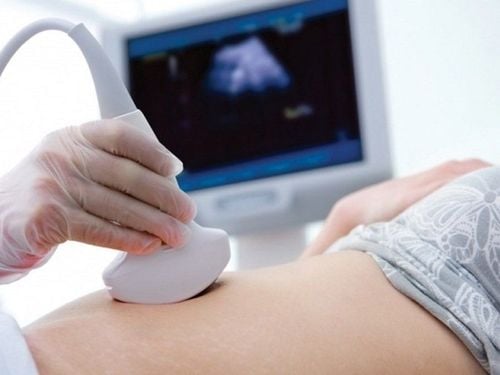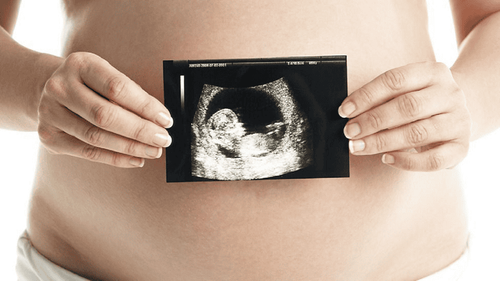This is an automatically translated article.
The article is professionally consulted by Master, Doctor Trinh Thi Phuong Nga - Radiologist - Department of Diagnostic Imaging and Nuclear Medicine - Vinmec Times City International Hospital. The doctor has nearly 20 years of experience in diagnostic imaging.And Master, Doctor Hoang Van Lan Duc - Doctor of Radiology - Department of Diagnostic Imaging and Nuclear Medicine - Vinmec Times City International General Hospital. The doctor has more than 10 years of experience in the field of imaging, especially in diagnosing with emergency internal, surgical, abdominal, thoracic, musculoskeletal, neurological and thyroid, breast, ...
1. What is uterine cleft palate?
The cervix is like a narrow tubular canal connecting the uterus to the vagina. When not pregnant, the cervix is slightly open to allow menstruation to flow out and sperm to easily move into the uterus. When a woman is pregnant, the cervix becomes hard and long, the mucus present in the cervix will create a barrier that makes the cervix close to help the fetus be well nourished inside. As the fetus grows and labor nears, the cervix becomes shorter, softer, and dilated to facilitate the birth of the baby. This is the normal physiology of childbirth.Cleft uterus is a condition in pregnancy, the cervix is weakened, thin, dilated too soon, making the pregnancy unable to hold in the uterine cavity, causing miscarriage. Cleft palate occurs in 0.5% of pregnant women and 8% of women with a history of second-trimester miscarriage.
Cleft palate is difficult to diagnose, patients will not notice any signs or symptoms when the cervix begins to open in the early stages. From weeks 14-20 of pregnancy, you may experience mild discomfort and vaginal discharge. Some other possible symptoms are: feeling of pelvic tension, mild contractions, back pain, change in the nature of vaginal discharge,... Early diagnosis and treatment will help prevent the risk of miscarriage. Therefore, when feeling unusual symptoms, pregnant women should quickly see a doctor for timely examination and treatment.

2. Can transvaginal ultrasound diagnose cleft palate?
To diagnose cervical incompetence, doctors will rely on clinical symptoms, pregnancy history, and ultrasound results. Ultrasound diagnosis of ectopic pregnancy is performed transvaginally. Transvaginal ultrasound is a safe and effective method. Due to better access to the uterus, transvaginal ultrasound is more accurate than conventional transabdominal ultrasound.To perform diagnostic ultrasound of uterine atresia, the patient will be instructed to lie on the examination table with knees bent. To make it more convenient, the doctor may give the patient a small pillow on the buttocks.
The vaginal transducer is lubricated, then inserted into the vagina. Although it does not cause pain, the patient may feel pressure and discomfort. As the transducer emits sound waves and picks up signals, these signals encode and produce images of the pelvic organs. The sonographer will observe the images on the monitor and adjust the transducer accordingly. Transvaginal ultrasound usually takes 30-60 minutes. Ultrasound helps to assess the length of the cervix and check if the amniotic membrane has prolapsed outside the uterus. The diagnosis of ectopic pregnancy is confirmed when the cervical length is ≤ 25mm before 24 weeks of gestation.

3. How is cervical ectropion treated?
Once it has been confirmed that a pregnant woman has cervical cleft, especially if the patient is less than 24 weeks pregnant or has a history of preterm birth, the doctor may recommend a cervical stitch. This is a technique where the cervix will be securely sutured with sutures. The cervical stitch helps to keep the baby in the womb until the right time is born. The sutures will be removed during the last month of pregnancy or during labor. Cervical fusion can be performed as early as 14 weeks of pregnancy while the cervix is still closed if the woman has a history of preterm birth due to a previous cleft palate.
Cervical fissure can be diagnosed through ultrasound technology. Therefore, when being diagnosed with the disease, pregnant women need to follow the doctor's treatment regimen to ensure the health and safety of both mother and fetus. Vinmec helps prevent premature birth or recurrent miscarriage. When the pregnancy is full-term, the suture removal procedure will be performed so that the mother can have a vaginal birth as normal physiologically.
With modern medical equipment, standard ultrasound system, sterile room. The entire technical process is performed by a team of experienced and qualified medical professionals who will help pregnant women have a healthy pregnancy, round mother and square baby.
Please dial HOTLINE for more information or register for an appointment HERE. Download MyVinmec app to make appointments faster and to manage your bookings easily.














